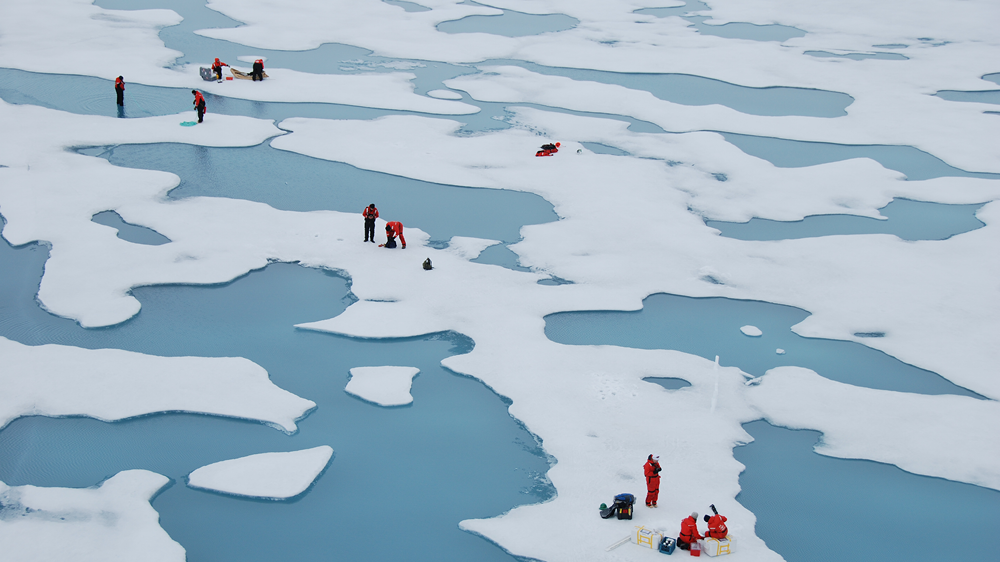Disasters caused by rapid global warming are stimulating interest in the possibility of cooling Earth’s climate, by artificially reflecting some of the incident sunlight back to space, called “geoengineering”. In contrast to the methods of global geoengineering (injecting aerosols into the stratosphere or brightening clouds over the ocean), there are also proposals for regional geoengineering specific to the Arctic. The hope is to counter the rapid ongoing decline of sea ice, by increasing the ice growth rate in winter, or reducing the melt rate in summer. One method evaluated in detail is the proposal to spread white powder (hollow glass microspheres) over the various surface types on the Arctic Ocean, to reflect the sunlight.
Stephen Warren is Emeritus Professor of Atmospheric Sciences and Earth & Space Sciences at the University of Washington in Seattle. His research interest is the interaction of solar radiation with snow, clouds, and sea ice, and their role in climate. He has taught classes on climate, atmospheric radiation, glaciology, and scientific writing, and has won two awards for excellence in teaching. He has supervised 8 M.S. students and 12 Ph.D. students.
___________________________
Once a month, researchers at the Department of Geosciences, University of Oslo, will tell about their research and introduce the geociences to a wide audience, from first-year undergraduates, colleagues to interested in general. It is possible to ask questions after the lectures.
Coffee/tea are served. Everyone is welcome!
The lectures are streamed. You can watch the stream at Realfagsbiblioteket YouTube-channel.
